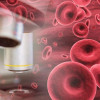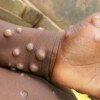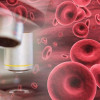
 Mr. Swapnil Bhowmick
Mr. Swapnil Bhowmick
What is Skin Cancer?
What is Skin Cancer?
Skin cancer is defined as the abnormal development of skin cells. It often forms in regions that are exposed to sunlight, although it can also occur in areas that are not ordinarily exposed to sunlight.The majority of skin cancers are cancerous (malignant) growths of the skin that are locally damaging. They are made up of cells from the epidermis, the skin's outermost layer. Unlike cutaneous malignant melanoma, the great majority of these skin malignancies seldom spread to other areas of the body and become life-threatening.
There are three primary kinds of skin cancer:
Basal cell carcinoma (the most frequent),
Squamous cell carcinoma (the second most common), all of which start from skin cells, and
Melanoma, which also originates from skin cells but is less common and more deadly than the first two.
What are the Causes of Skin Cancer?
Mutations in the DNA of your skin cells cause both forms of skin cancer. These mutations enable skin cells to proliferate uncontrolled, resulting in a mass of cancer cells.
UV (ultraviolet) radiation from the sun or tanning beds induces basal cell skin cancer. UV radiation can cause DNA damage within your skin cells, resulting in abnormal cell development. UV radiation is also a cause of squamous cell skin cancer.
Long-term exposure to cancer-causing substances can also result in squamous cell skin cancer. It can appear within a burn scar or ulcer, and it can also be caused by some kinds of human papillomavirus (HPV).
Melanoma has an unknown etiology. Most moles do not develop into melanomas, and researchers are baffled as to why some do. Melanoma, like basal and squamous cell skin malignancies, can be induced by UV radiation. However, melanomas can form in areas of your body that are not normally exposed to sunlight.
Is Skin Cancer Hereditary?
Because most skin cancers are caused by UV light exposure, they are not thought to be inherited. However, the fact that skin cancer is significantly more frequent in dark-skinned people and that skin color is hereditary lends credence to the notion that heredity is highly relevant. There are certain extremely uncommon genetic disorders that cause an increase in the number of skin malignancies in people who are afflicted.
What are the Different Forms of Skin Cancer?
Skin tumors are classified into numerous types: The most prevalent kind of cancer in humans is basal cell carcinoma. Every year, around a million new instances of basal cell carcinoma are identified worldwide.
There are various kinds of basal cell carcinoma, including:
the superficial type, which is the least concerning; and
the nodular type, which is the most difficult to treat since the tumors frequently expand into the surrounding tissue (infiltration) without a well-defined boundary.
Squamous cell carcinoma accounts for around 20% of all skin malignancies but is more frequent in immunocompromised individuals. In most cases, its biological activity is similar to that of basal cell carcinoma.

What are the Symptoms of Skin Cancer?
Skin cancer is not all the same, and it may not produce many symptoms. Even so, unexpected changes in your skin can be a symptom of many forms of cancer. Being on the lookout for changes in your skin might help you receive a diagnosis sooner.
Look out for signs including:
A new mole, odd growth, lump, painful, scaly patch, or dark area appears on the skin and does not go away.
Asymmetry, occurring when the two parts of a lesion or mole are not even or identical.
The margins of the lesions being jagged and irregular.
The color of the spot is unique, such as white, pink, black, blue, or red.
Diameter: The spot is bigger than a quarter-inch in diameter, or around the size of a pencil eraser.
Changing: It is possible to notice that the mole is changing color, size, and shape.
Skin Cancer Diagnosis
A skin biopsy is often performed to confirm a skin cancer suspicion. This is accomplished by numbing the region beneath the tumor using a local anesthetic such as lidocaine (lignocaine). A tiny part of the tumor is removed and submitted for evaluation by a pathologist, who examines the tissue under a microscope and makes a diagnosis based on the tumor's features.Make an appointment with your doctor if you discover any suspicious spots or growths on your skin, or if you see any changes in existing spots or growths. For a diagnosis, your doctor will check your skin or send you to a specialist.
The form, size, color, and texture of the suspicious spot on your skin will most likely be examined by your doctor or expert. In addition, they will look for scaling, bleeding, or dry areas. If your doctor believes it is malignant, he or she may do a biopsy.During this easy and safe process, they will remove the questionable region or a piece of it to be tested in a lab. This can assist them in determining whether or not you have skin cancer.If you have skin cancer, you may require further testing to determine how far it has gone. The kind and stage of your skin cancer, as well as other factors, will influence your suggested treatment strategy.
What is the Treatment for Skin Cancer?
Skin cancer can be treated in a variety of ways. The type of therapy chosen is determined by the location and size of the tumor, the microscopic features of the disease, and the patient's overall health.
- Topical medications: Some creams, gels, and solutions can be used to treat superficial basal cell carcinomas, such as imiquimod (Aldara), which works by activating the body's immune system, leading it to generate interferon, which targets the malignancy, and fluorouracil (5-FU), a chemotherapy treatment. Some individuals have no adverse effects from these topical therapies, while others may have redness, inflammation, and irritation. One disadvantage of topical medicines is that there is no tissue to check to see if a tumor has been entirely eliminated.
- Destruction by electrodesiccation and curettage (EDC): The tumor is anesthetized with a local anesthetic and repeatedly scraped with a sharp tool (curette), after which the edge is cauterized with an electric needle. The benefit of this approach is that it is quick, simple, and very affordable. The drawbacks are that the scar is typically unattractive, and the recurrence rate can reach 15%.
- Surgical excision: A local anesthetic is used to numb the region around the tumor. Sutures are used to seal the incision margins after a football-shaped piece of tissue, including the tumor, is excised. Skin grafts or flaps are required to close the defect in the case of, particularly large tumors.
- Radiation therapy: Over a span of ten to fifteen treatment sessions, a high dosage of radiation is delivered to the tumor and a small region of adjacent skin. This type of therapy is beneficial for individuals who are not surgical candidates. The benefit of radiation treatment is that it does not require any cutting. The drawbacks of this pricey option include that the treated region cannot be checked to ensure that the entire tumor has been removed, and radiation scars deteriorate with time. As a result, it is generally reserved for older patients.

Mr. Swapnil Bhowmick
A motivated student of Medicine & Surgery (MBBS) at R. G. Kar Medical College & Hospital, Kolkata, having a knack for reading and composing medical literature. When he's not writing content for MEDtalks, Swapnil is usually looking up the latest trends and innovations in Medicine.




















Please login to comment on this article